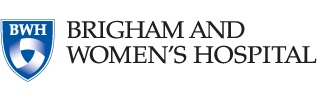Cardiac Screening in Survivors of Hodgkin's Disease Treated With Mediastinal Irradiation
| Status: | Active, not recruiting |
|---|---|
| Conditions: | Lymphoma |
| Therapuetic Areas: | Oncology |
| Healthy: | No |
| Age Range: | 20 - Any |
| Updated: | 3/30/2019 |
| Start Date: | February 2004 |
| End Date: | December 2020 |
The main purpose of this study is to determine if it is possible to put into practice a
cardiac screening program for survivors of Hodgkin's disease. In this study, we would also
like to screen for cardiac risk factors that can be modified either through life-style
changes or medications, to uncover significant abnormal heart findings in which treatments
may be needed, and to see if there is a link between cardiac health and quality of life.
cardiac screening program for survivors of Hodgkin's disease. In this study, we would also
like to screen for cardiac risk factors that can be modified either through life-style
changes or medications, to uncover significant abnormal heart findings in which treatments
may be needed, and to see if there is a link between cardiac health and quality of life.
- On the day of the patient's scheduled follow-up visit with their oncologist, additional
blood work will be obtained and the patient will fill out questionnaires concerning
their general health and assessing quality of life.
- A separate cardiology visit with a preventative cardiologist will be performed. At this
visit, the patient will undergo a Stress Echocardiogram.
- A Stress Echocardiogram is made up of three parts: Resting echo study, stress test and
repeat echo while the heart is still beating fast.
- A resting echo provides the baseline examination and demonstrates the size and function
of various chambers of the heart.
- The stress test involves exercise using a treadmill or a stationary bike. In patients
who are unable to complete a high level of exercise due to physical limitations, stress
to the heart is provided by a pharmaceutical or chemical stimulation to the heart.
Exercise is started at a slower, warm-up speed and then increased every 3 minutes.
Exercise is abruptly stopped once the patient exceeds 85% of the target rate. EKG
recordings are made every minute of exercise and then again after exercise is stopped.
Blood pressure is recorded at three minute intervals during exercise and then again at
rest.
- Immediately after exercise is stopped, the patient will undergo a repeat echocardiogram.
- If no cardiac abnormalities are detected, the screening tests will be repeated every 3
years, if the patient is less than 10 years out from their initial treatment. If the
patient is more than 10 years from initial treatment, then the tests will be repeated at
approximately 18 months from the initial screening and once more at the end of the third
year.
blood work will be obtained and the patient will fill out questionnaires concerning
their general health and assessing quality of life.
- A separate cardiology visit with a preventative cardiologist will be performed. At this
visit, the patient will undergo a Stress Echocardiogram.
- A Stress Echocardiogram is made up of three parts: Resting echo study, stress test and
repeat echo while the heart is still beating fast.
- A resting echo provides the baseline examination and demonstrates the size and function
of various chambers of the heart.
- The stress test involves exercise using a treadmill or a stationary bike. In patients
who are unable to complete a high level of exercise due to physical limitations, stress
to the heart is provided by a pharmaceutical or chemical stimulation to the heart.
Exercise is started at a slower, warm-up speed and then increased every 3 minutes.
Exercise is abruptly stopped once the patient exceeds 85% of the target rate. EKG
recordings are made every minute of exercise and then again after exercise is stopped.
Blood pressure is recorded at three minute intervals during exercise and then again at
rest.
- Immediately after exercise is stopped, the patient will undergo a repeat echocardiogram.
- If no cardiac abnormalities are detected, the screening tests will be repeated every 3
years, if the patient is less than 10 years out from their initial treatment. If the
patient is more than 10 years from initial treatment, then the tests will be repeated at
approximately 18 months from the initial screening and once more at the end of the third
year.
Inclusion Criteria:
- Patients treated at Brigham and Women's Hospital or Dana-Farber Cancer Institute for
Hodgkin's disease with mediastinal irradiation
- Age > or = to 15 years of age
- Five years or longer after initial treatment
- Relapse-free interval of > 1 year
Exclusion criteria:
- Patients treated for Hodgkin's disease outside of Brigham and Women's Hospital or
Dana-Farber Cancer Institute
- Current age < 15 years of age
- Less than 5 years out from initial treatment
- Relapses within 1 year
We found this trial at
2
sites
Dana-Farber Cancer Institute Since it’s founding in 1947, Dana-Farber has been committed to providing adults...
Click here to add this to my saved trials
Brigham and Women's Hosp Boston’s Brigham and Women’s Hospital (BWH) is an international leader in...
Click here to add this to my saved trials

